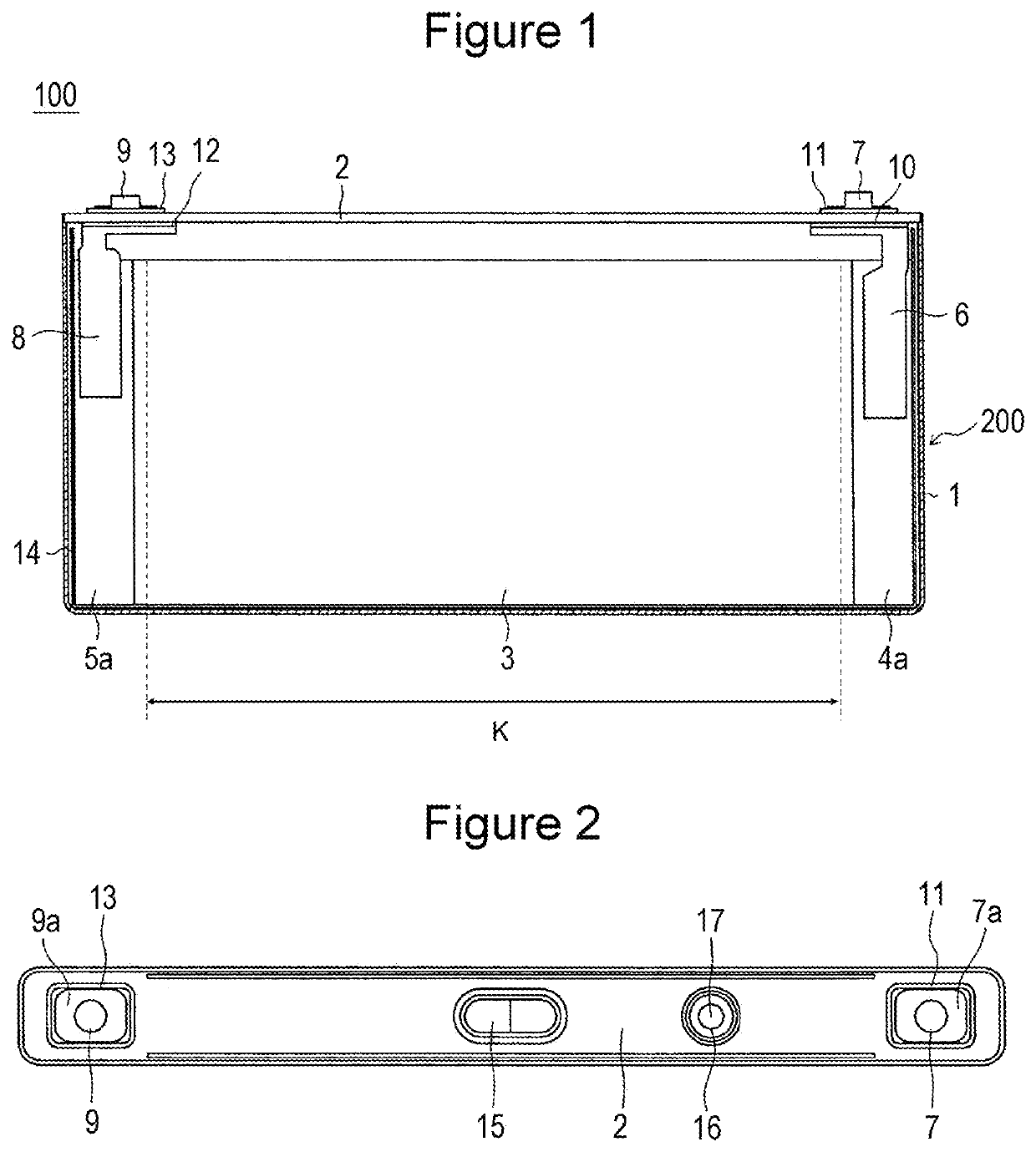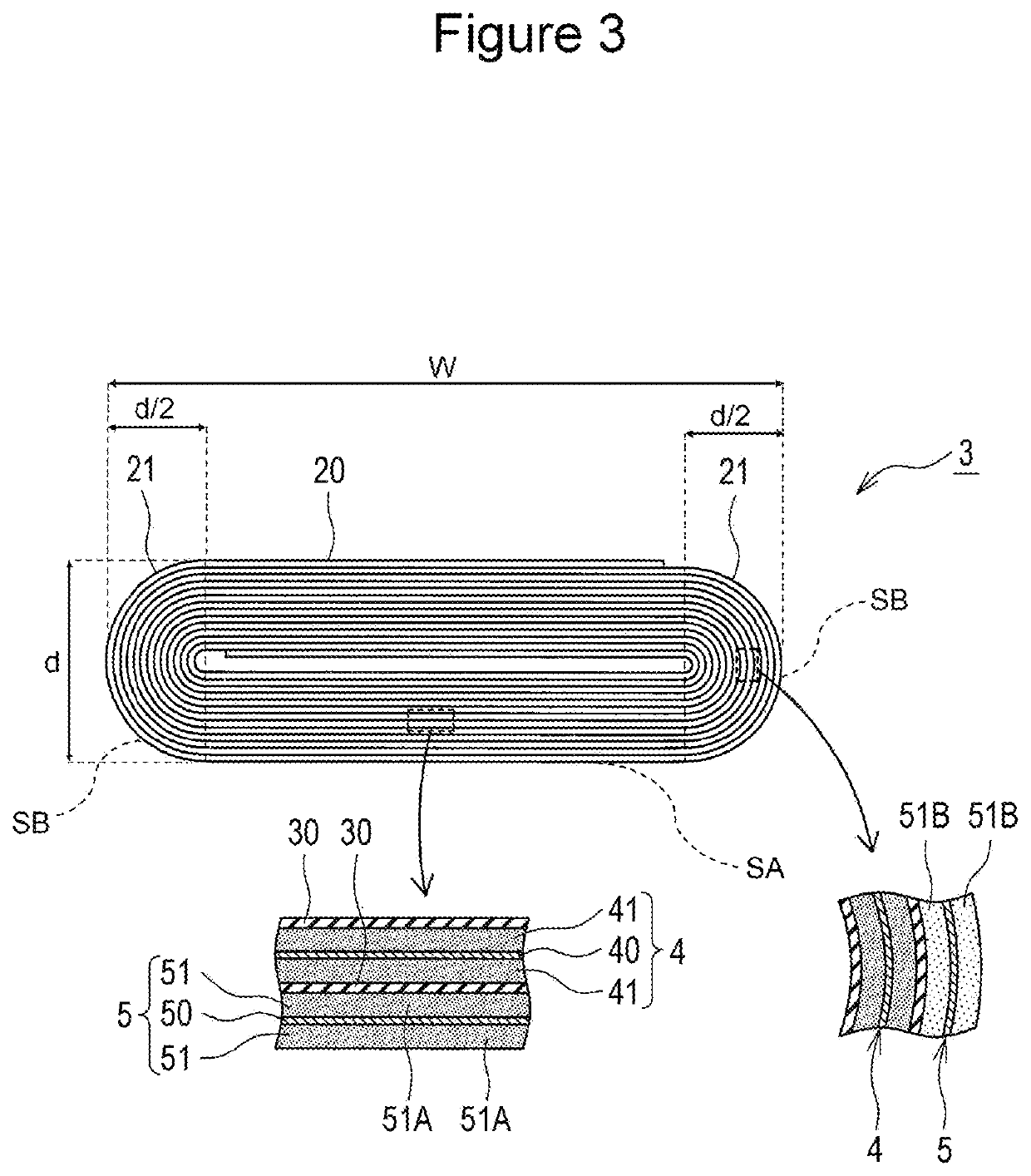Nonaqueous electrolyte secondary battery
a secondary battery, nonaqueous electrolyte technology, applied in the direction of wound/folded electrode electrodes, cell components, sustainable manufacturing/processing, etc., can solve the problems of increasing the amount of electrolyte in the flat part, reducing the cycle characteristics, and reducing the amount of electrolyte, etc., to improve the cycle characteristics of nonaqueous electrolyte secondary batteries, low precipitation, and high capacity retention rate and output
- Summary
- Abstract
- Description
- Claims
- Application Information
AI Technical Summary
Benefits of technology
Problems solved by technology
Method used
Image
Examples
example 1
[Formation of Positive Electrode]
[0048]A lithium transition metal composite oxide represented by LiNio0.35Co0.35Mn0.30O2 was used as a positive electrode active material. The positive electrode active material, acetylene black, and polyvinylidene fluoride (PVdF) were mixed at a solid content mass ratio of 97:2:1 to prepare a positive electrode mixture slurry using N-methyl-2-pyrrolidone (NMP) as a dispersion medium. Next, the positive electrode mixture slurry was applied on both surfaces of a positive electrode core composed of a strip-shaped aluminum foil having a width of 127 mm (coating width 110 mm=length (K) of a positive electrode mixture layer along the axial direction of an electrode body), and the coating films were dried and then compressed to form positive electrode mixture layers on both surfaces of the core. The core was cut into a predetermined electrode size to form a positive electrode.
[Formation of Negative Electrode]
[0049]Graphite was used as a negative electrode a...
example 2
[0053]An electrode body and a nonaqueous electrolyte secondary battery were formed by the same methods as in Example 1 except that in forming the electrode body, the negative electrode used included a negative electrode mixture layer having a packing density of 1.01 g / cm3 before pressing a wound body, and the pressing pressure for the wound body was changed to 115 kN. The electrode body had a thickness 15.2 mm and a width (W) of 57.5 mm.
example 3
[0054]An electrode body and a nonaqueous electrolyte secondary battery were formed by the same methods as in Example 1 except that in forming the electrode body, the negative electrode used included a negative electrode mixture layer having a packing density of 1.11 g / cm3 before pressing a wound body, and the pressing pressure for the wound body was changed to 90 kN. The electrode body had a thickness 16.4 mm and a width (W) of 56.9 mm.
PUM
| Property | Measurement | Unit |
|---|---|---|
| porosity | aaaaa | aaaaa |
| porosity | aaaaa | aaaaa |
| porosity | aaaaa | aaaaa |
Abstract
Description
Claims
Application Information
 Login to View More
Login to View More - R&D
- Intellectual Property
- Life Sciences
- Materials
- Tech Scout
- Unparalleled Data Quality
- Higher Quality Content
- 60% Fewer Hallucinations
Browse by: Latest US Patents, China's latest patents, Technical Efficacy Thesaurus, Application Domain, Technology Topic, Popular Technical Reports.
© 2025 PatSnap. All rights reserved.Legal|Privacy policy|Modern Slavery Act Transparency Statement|Sitemap|About US| Contact US: help@patsnap.com


